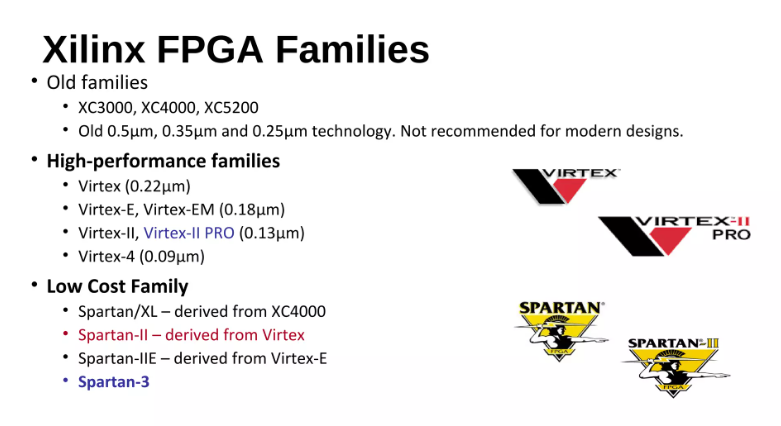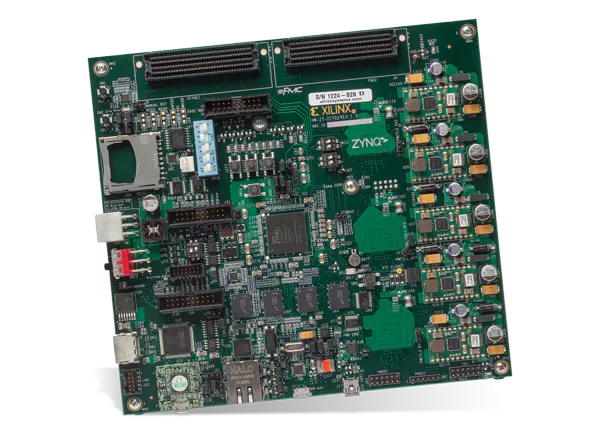
Understanding Xilinx FPGAs: Features, Applications, and Future Trends
Global electronic component supplier AMPHEO PTY LTD: Rich inventory for one-stop shopping. Inquire easily, and receive fast, customized solutions and quotes.
| Number | Subheading |
|---|---|
| 1 | Introduction to Xilinx FPGA |
| 1.1 | Overview of FPGAs and Their Applications |
| 1.2 | Brief History of Xilinx |
| 2 | What is an FPGA? |
| 2.1 | Definition and Functionality |
| 2.2 | Comparison with ASICs and Microcontrollers |
| 3 | Key Features of Xilinx FPGAs |
| 3.1 | High Performance and Parallel Processing |
| 3.2 | Flexibility and Reconfigurability |
| 4 | Xilinx FPGA Families |
| 4.1 | Overview of Different Series (e.g., Virtex, Kintex, Artix) |
| 4.2 | Use Cases for Each Family |
| 5 | Designing with Xilinx FPGAs |
| 5.1 | Development Tools and Software |
| 5.2 | VHDL and Verilog Programming |
| 6 | Applications of Xilinx FPGAs |
| 6.1 | Telecommunications |
| 6.2 | Automotive Industry |
| 6.3 | Industrial Automation |
| 7 | Advantages of Using Xilinx FPGAs |
| 7.1 | Cost-Effectiveness and Time-to-Market |
| 7.2 | Support for AI and Machine Learning |
| 8 | Challenges and Limitations |
| 8.1 | Complexity of Design |
| 8.2 | Learning Curve for New Users |
| 9 | Future Trends in FPGA Technology |
| 9.1 | Integration with AI and Machine Learning |
| 9.2 | The Role of Xilinx in Future Technologies |
| 10 | Conclusion |
| 10.1 | Summary of Key Points |
| 10.2 | Final Thoughts on Xilinx FPGAs |
| 11 | Frequently Asked Questions |
| 11.1 | What is the main advantage of using Xilinx FPGAs? |
| 11.2 | How do Xilinx FPGAs differ from other brands? |
| 11.3 | What programming languages are used with Xilinx FPGAs? |
| 11.4 | Can Xilinx FPGAs be used for AI applications? |
| 11.5 | What are the typical use cases for Xilinx FPGAs? |
| 11.6 | How to get started with Xilinx FPGA development? |
Introduction to Xilinx FPGA
FPGAs, or Field-Programmable Gate Arrays, are integral components in the modern electronics landscape, providing versatility and performance across a wide range of applications. Xilinx, a pioneer in FPGA technology, has played a significant role in the evolution of these devices, enabling engineers to implement complex functionalities through hardware reconfiguration. This article will explore the world of Xilinx FPGAs, their features, applications, and the advantages they offer over traditional computing methods.
What is an FPGA?
Definition and Functionality
A Field-Programmable Gate Array (FPGA) is a semiconductor device that can be configured by the customer or designer after manufacturing—hence "field-programmable." FPGAs consist of an array of programmable logic blocks, interconnects, and input/output pins, allowing for a wide variety of digital circuits to be implemented. They enable high-speed processing and are ideal for applications where performance and flexibility are paramount.
Comparison with ASICs and Microcontrollers
Unlike Application-Specific Integrated Circuits (ASICs), which are custom-designed for a specific application and cannot be altered after fabrication, FPGAs can be reprogrammed to suit different tasks. This flexibility makes them suitable for prototyping and small-scale production runs. Compared to microcontrollers, FPGAs provide superior parallel processing capabilities, making them more effective for tasks that require high data throughput.
Key Features of Xilinx FPGAs
High Performance and Parallel Processing
Xilinx FPGAs are renowned for their ability to handle multiple operations simultaneously, leveraging their parallel architecture. This capability allows for real-time data processing, which is critical in applications such as telecommunications and video processing.
Flexibility and Reconfigurability
One of the standout features of Xilinx FPGAs is their reconfigurability. Engineers can modify the hardware configuration to adapt to changing requirements without the need for new hardware. This is particularly beneficial in fast-paced industries like automotive and aerospace, where specifications may evolve during the development process.
Xilinx FPGA Families
Overview of Different Series (e.g., Virtex, Kintex, Artix)
Xilinx offers several FPGA families, each tailored for specific use cases:
- Virtex: Designed for high-end applications requiring maximum performance and capabilities, such as data centers and high-performance computing.
- Kintex: Balances performance and cost, suitable for applications like industrial automation and embedded systems.
- Artix: Focused on low power and cost, ideal for portable and battery-operated devices.

Use Cases for Each Family
Each family serves distinct market needs, from high-speed networking in Virtex to cost-sensitive applications in Artix, enabling engineers to choose the right FPGA for their project requirements.
Designing with Xilinx FPGAs
Development Tools and Software
Xilinx provides a suite of development tools, including Vivado Design Suite, which offers a comprehensive environment for designing and deploying FPGA solutions. This software supports various design methodologies, including RTL, high-level synthesis, and system-level design.
VHDL and Verilog Programming
Designers can program Xilinx FPGAs using hardware description languages like VHDL and Verilog. These languages allow engineers to define the behavior and structure of the FPGA, enabling complex designs to be implemented effectively.
Applications of Xilinx FPGAs
Telecommunications
Xilinx FPGAs are widely used in telecommunications for applications such as signal processing, network routing, and wireless communications. Their ability to handle high data rates and real-time processing makes them essential in modern communication systems.
Automotive Industry
In the automotive sector, FPGAs play a crucial role in advanced driver-assistance systems (ADAS), enabling features such as image processing for cameras and sensor fusion.
Industrial Automation
Xilinx FPGAs are also employed in industrial automation for control systems, robotics, and process management, enhancing efficiency and precision in manufacturing processes.

Advantages of Using Xilinx FPGAs
Cost-Effectiveness and Time-to-Market
Using Xilinx FPGAs can significantly reduce development time and costs, especially in prototyping. The ability to reprogram devices means companies can iterate quickly and bring products to market faster.
Support for AI and Machine Learning
As AI and machine learning become increasingly important, Xilinx FPGAs provide the necessary computational power to handle these complex algorithms, making them a preferred choice in data-intensive applications.
Challenges and Limitations
Complexity of Design
While FPGAs offer great flexibility, the design process can be complex and requires a deep understanding of hardware and software integration. Engineers may face challenges in optimizing designs for performance and resource utilization.
Learning Curve for New Users
New users may encounter a steep learning curve when transitioning to FPGA development, especially if they are more familiar with traditional software programming.
Future Trends in FPGA Technology
Integration with AI and Machine Learning
The future of FPGAs lies in their integration with AI and machine learning technologies. Xilinx is leading this trend by providing tools that facilitate the development of intelligent systems capable of processing large volumes of data efficiently.
The Role of Xilinx in Future Technologies
As technology continues to evolve, Xilinx will likely remain at the forefront, driving innovations in FPGA architecture and applications, particularly in emerging fields such as autonomous systems and IoT.
Conclusion
Summary of Key Points
Xilinx FPGAs are powerful, flexible devices that have transformed the landscape of digital design. Their ability to be reprogrammed and their high performance make them invaluable in various industries, from telecommunications to automotive.
Final Thoughts on Xilinx FPGAs
As the demand for faster, more efficient processing solutions grows, Xilinx FPGAs will play a critical role in shaping the future of technology, enabling innovations that were previously thought impossible.
Frequently Asked Questions
What is the main advantage of using Xilinx FPGAs?
Xilinx FPGAs offer unparalleled flexibility, allowing for reconfiguration and rapid prototyping without the need for new hardware.
How do Xilinx FPGAs differ from other brands?
Xilinx FPGAs provide advanced performance features and a robust suite of development tools that support a wide range of applications.
What programming languages are used with Xilinx FPGAs?
The primary programming languages for Xilinx FPGAs are VHDL and Verilog, which allow for detailed hardware description and design.
Can Xilinx FPGAs be used for AI applications?
Yes, Xilinx FPGAs are increasingly used in AI applications due to their high processing capabilities and flexibility.
What are the typical use cases for Xilinx FPGAs?
Common use cases include telecommunications, automotive systems, industrial automation, and data processing.
How to get started with Xilinx FPGA development?
Begin by exploring Xilinx’s development tools like the Vivado Design Suite, and consider taking online courses or tutorials to understand the programming languages involved.
